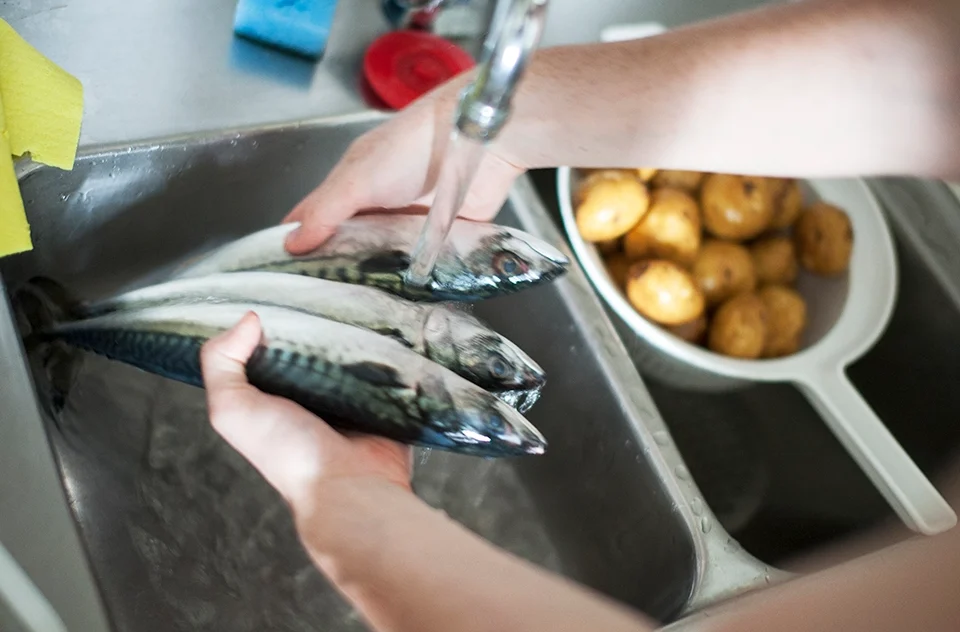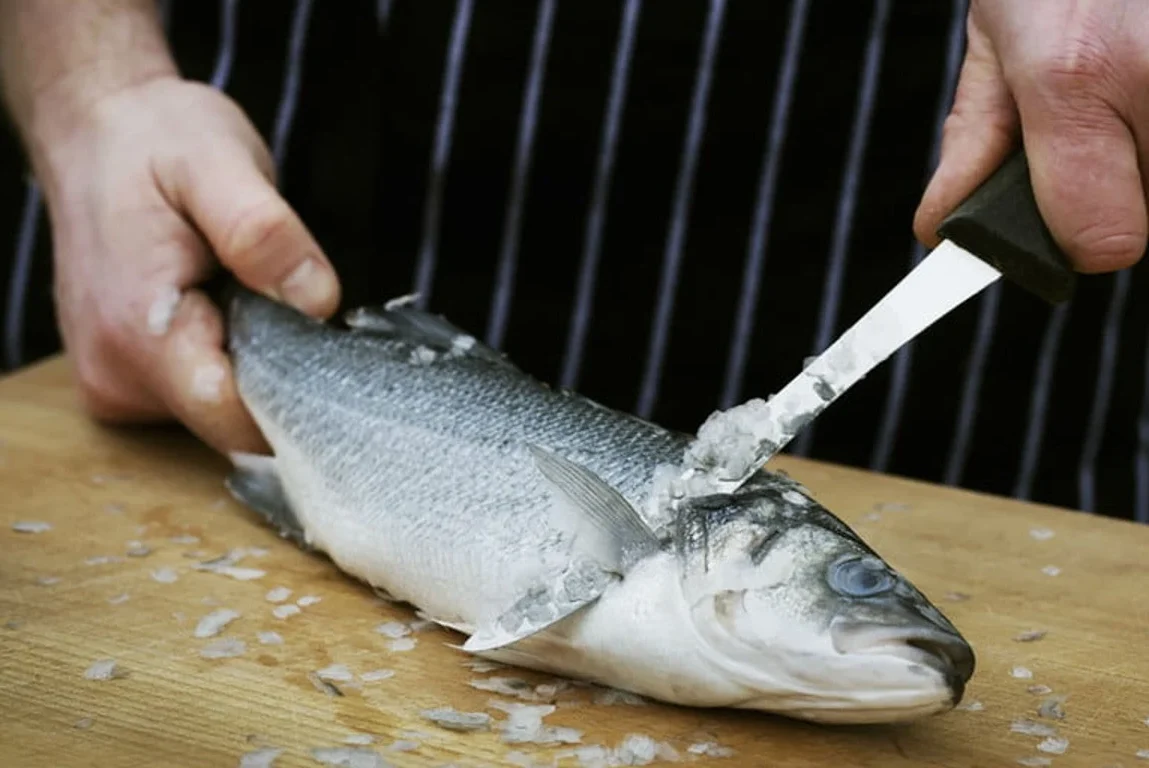Before cleaning a fish, it is important to prepare it properly. The first step is to scale the fish, which involves removing the scales from the skin. This can be done using a fish scaler or the back of a knife. Start at the tail and scrape the knife or scaler towards the head of the fish, removing the scales as you go. Once the scales are removed, rinse the fish under cold water to remove any loose scales or debris.
After scaling the fish, the next step is to remove the head and fins. To remove the head, start the knife at the top of the bony ridge behind the gills and cut around and down, making sure to include the pectoral fins. To remove the fins, use the tip of the knife to cut behind the fins, then cut along the collar bone in a U-shape towards both the spine and belly.
The final step in cleaning a fish is gutting it. To do this, make a cut along the belly of the fish from the anus to the base of the head. Use your fingers or a spoon to remove the guts, being careful not to puncture the gall bladder. Make sure to scrape out the kidney and bloodline running along the backbone. Once the fish is gutted, rinse it thoroughly under cold water to remove any remaining debris. The fish is now ready to be cooked or stored on ice until ready to use.
Cleaning the Fish
Cleaning a fish can seem like a daunting task, but with the right technique, it can be done quickly and efficiently. The first step in cleaning a fish is to use a knife to fillet the fish. To fillet a fish, hold the fish firmly with your non-dominant hand and use a sharp knife to make a cut behind the gills and down the length of the fish’s body. Then, use the knife to separate the fillet from the bones, running the blade along the bones and pulling the fillet away as you go.

Once the fillet is removed, it is important to remove the bloodline, which is the strip of red meat that runs down the center of the fillet. To remove the bloodline, use a sharp knife to cut it out, being careful not to cut too deep and remove too much of the fillet]. Removing the bloodline is essential, as it can leave a bitter taste in the fish if not removed.
After removing the bloodline, rinse the fish thoroughly with cold water, both inside and out, to remove any remaining scales, blood, and entrail bits. Run your hands over the fish to feel for any remaining scales, and give it a good rinse to ensure that it is clean and ready to be cooked. Cleaning a fish can be a messy process, but taking the time to do it properly will result in a delicious and healthy meal.
Filleting the Fish
Filleting a fish is an important step in the cleaning process, as it allows for the removal of the bones and preparation for cooking. To remove the fillet, place the fish on a cutting board and insert a sharp knife at the base of the head. Run the knife along the backbone, cutting through the rib bones until you reach the tail. Then, using a sawing motion, cut against the skin to remove the fillet. Repeat the process on the other side of the fish to obtain two fillets.
Once the fillets are removed, it is important to remove any pin bones that may be present. These bones are small, thin, and can be difficult to remove, but they can be a choking hazard if left in the fillet. To remove the pin bones, use a pair of needle-nosed pliers or fish bone pliers to grasp the bone and pull it out in the direction it is pointing.
After removing the pin bones, it is important to trim the fillet to remove any excess fat or skin. Use a sharp knife to remove any remaining scales and slime coating from the fillet. Then, use the knife to trim away any skin or fat from the fillet. The fillet is now ready to be cooked or stored for later use.
Storing the Fish
Once the fish has been cleaned and filleted, it is important to properly store it to maintain its freshness and quality. Packing the fillets tightly in a plastic bag or container can help prevent air from getting to the fish and causing it to spoil quickly. To further preserve the freshness of the fish, consider soaking the fillets in milk for a short period of time before packing them. This will help remove any bloody taste and keep the meat fresh.
The fish can be stored in the refrigerator for up to three days after it has been cleaned and filleted. To store the fish in the refrigerator, it is important to keep it at a temperature of 32-38°F.
One way to do this is by placing the fillets on a cooling rack inside a shallow container filled with ice. The ice will keep the temperature low and help prevent the growth of bacteria. It is important to check the fish often and replace the ice as it begins to melt. Additionally, it is important to store the fish on the bottom shelf of the refrigerator, away from ready-to-eat foods and prepared meals.
If you are not planning to use the fish within three days, it can be frozen for later use. To freeze the fish, it is important to wrap it tightly in plastic wrap or aluminum foil to prevent freezer burn. For even better protection against freezer burn, consider vacuum sealing the fish. Another effective method for freezing fish is to place the fillets in a Ziploc bag filled with water, which will help prevent air from getting to the fish. When it comes time to use the frozen fish, it is important to thaw it slowly in the refrigerator or by placing it in a bowl of cold water.


